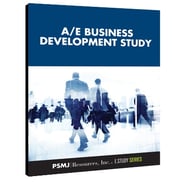 Through years of teaching and applying sales methodology, I have used the “ideal customer profile,” a component of Miller Heiman's Strategic Selling™ methodology.
Through years of teaching and applying sales methodology, I have used the “ideal customer profile,” a component of Miller Heiman's Strategic Selling™ methodology.
In this process, you pick attributes of your best and worst clients, and build a profile to measure all of your current clients and prospects against.
To start, you have to identify who your architecture or engineering firm's quality clients are, taking into consideration any number of quantitative characteristics, such as those listed below.
-
Average revenue per year. Your best clients may be your highest grossing clients, or those that generate the most fees for your firm. Look at data for the last three to five years and see which clients, on average, come out on top.
-
Fee trends. Some clients only generate high fees when they have projects. Evaluate the previous year’s data to see which client’s revenues are rising or falling. Be careful to factor in changes in their industry, your services, and the economy as a whole.
-
Diversity of services provided. Your best clients will tend to use a wide range of your services. You can map the number, type, and range of services purchased from your firm to see which clients are helping you grow your overall corporate capabilities.
-
Payment history. Check in with your accounting staff to find out which clients are slow at paying their bills. The ones that consistently show up on your accounts receivable aging report may deserve a second look in the final analysis, or at least warrant some corporate attention.
-
Selection of service providers. Consider your clients’ process of selecting consultants. Do they make decisions based on qualifications, price, or best value? Is their selection process clearly communicated and documented, or do they appear to choose “who they want to do the job” regardless of published selection criteria.
Next, look at some of the more qualitative attributes of your clients. The things that tend to be more difficult to measure can be equally, if not more important, to the long-term health of your business.
-
Loyalty. Great clients stick with you when the going gets rough. Loyal clients will understand when you make a mistake, give you the benefit of the doubt, and allow you fix problems without penalizing your firm. Then they will come back and select you for another project.
-
Ethical behavior. It may be obvious, but clients who ask you to consistently cut corners should not be on the top of your list. I run the other way when I see shady business practices, scandals of any kind, and dishonesty.
-
Good communication. Long-term relationships are built on good communication. Look for clients who are accessible, willing to listen, openly share information on current and future projects, and allow access to their staff.
-
History of partnering. Which clients are true partners, willing to come to the table to negotiate in good faith, and then work with you to solve problems? This goes well beyond the “project partnering meeting” that establishes common goals, only to lapse into “business as usual.”
-
Look for innovative approaches. I love working for clients who value creativity and innovation. This sometimes requires sticking your neck out and taking a chance. But isn’t that more fun than doing the same project, in the same way, and getting the same result.
Of course there are many more traits that you can consider. One way to select your top clients is to have a session with your key managers and brainstorm a list of attributes like the ones listed above. Then rank your current clients against these criteria to objectively find the best ones.
Typically the Pareto Principle, or “the 80-20 rule,” will govern your client mix. That is, it’s likely that 80 percent of your revenues are generated from 20 percent of your clients (or a variation of this). When you plan your business development resources, put 80 percent of your people and dollars against your best clients.
About the Author: Wally Hise is vice president of federal marketing for HDR Engineering, Inc. (Omaha,NE).
For more business development tips, check out PSMJ's  A/E Business Development Study: How Today’s Most Successful A/E Firms Keep Their Clients Happy and Win New Work.
A/E Business Development Study: How Today’s Most Successful A/E Firms Keep Their Clients Happy and Win New Work.



